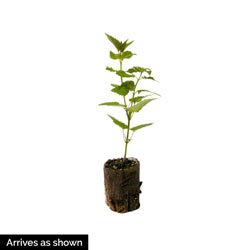

Most varieties have a long, blooming season from late spring or early summer until the fall, when the foliage will die back and regrow anew the following year. Depending on their variety and growing conditions, they typically grow anywhere from 18 inches to 3 feet tall and 2 to 3 feet wide, with a low-maintenance, bushy form. Hummingbird mint plants, or Agastache, are native to North America, but they can grow all over the world in suitable climates. Planting Hummingbird Mint in a garden or around the yard can provide hummingbirds with an important food source. The leaves of the plant also contain a sweet nectar that the birds can feed on. In addition, the flowers are a variety of bright colors, including pink, purple, yellow, and white, making them highly visible to hummingbirds.

Hummingbirds love the nectar and pollen found in the Hummingbird Mint blossoms, which have a strong scent that attracts them. This plant has small tubular flowers that are an important food source for these birds. Yes, Hummingbird Mint will attract hummingbirds. Does hummingbird mint actually attract hummingbirds? Hummingbird Mint can also be grown in containers that are lifted and separated from the main garden space to help contain it. In these cases, it is important to prevent the plant from spreading by pruning or deadheading regularly, and controlling the amount of water and nutrients it receives. However, it can be invasive in some climates if not managed properly. It is a hardy, low-maintenance plant that does not spread aggressively in the garden and does not typically require any special care. This plant is native to the eastern United States and Canada, and is typically found growing in sunny or partially shaded areas with moist, well-drained soil. No, Hummingbird Mint is not considered an invasive species. When transplanting into containers, ensure that the pots are deep enough to accommodate the plant’s root system.Īlong with regular watering and feeding, this cheerful plant will thrive in a container environment. Hummingbird Mint is especially well-suited for growing in pots or containers due to its small size, as it only grows to about 1-2 feet in height. It is easy to grow and can adapt to an array of soil types, so long as well-draining soil is maintained. This plant is a perennial flowering herb that is prized for its long bloom season and attractive, tubular flowers. Yes, hummingbird mint (Agastache) can be planted in pots. It blooms in late summer to early fall and is reliably hardy in USDA Zones 5–9. Hummingbird mint typically grows to be between 1–5 feet tall and each stem can easily spread to a width of 1–2 feet. Hummingbird mint also has a strong, mint-like aroma that is highly attractive to pollinators and is shown to increase their activity and duration in the garden.

It can even thrive in boggy soil, making it a great choice for moist ground, as well as for sunny rock gardens or slopes. While it can tolerate drier conditions, it does best with regular irrigation or rainfall. Hummingbird mint prefers a sunny location, with moist, well-drained soil. It is an easy-to-grow perennial herb with clusters of vibrant purple, pink, or white flowers that attract hummingbirds and other pollinators. ) is a genus of plants in the Lamiaceae family that is native to the southwestern United States and Mexico. Overall, deciding whether or not to cut back your hummingbird mint is based on your individual preference and desired outcome. That being said, it’s a good idea to do some regular pruning or deadheading of your plant to keep it healthy and in shape. Hummingbird mint blooms on new growth, so limiting the amount of trimming you do will often lead to more flower production.
Tango hummingbird mint full#
On the flip side, if you’d like your hummingbird mint to grow as large as possible and to be full of blooms, then you’ll want to refrain from trimming it back. This will encourage bushier growth, as well as keep your hummingbird mint from taking over all of your garden. If you’re looking for your plant to stay contained and remain on the smaller side, trimming back the stems periodically is recommended. It depends on the overall condition of your plant and your growing goals. Providing regular fertilizer and care can also ensure that hummingbird mint comes back year after year. Deadheading and trimming back the stems will help encourage new growth and blooms.

Hummingbird mint does need some maintenance, though, to ensure its growth and blooming. It will spread out each year, filling in more space with each passing season. If planted in the right conditions, it can survive the summer months and come back year after year. The plant prefers full sun and soil with good drainage, and it can survive some frost and light snow.


 0 kommentar(er)
0 kommentar(er)
